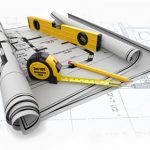Home Restoration: Selecting the right cable for the right job
In home restoration you will undoubtedly find yourself in need to do electricity work, like installing lamps, wall sockets and so on and so forth. In theory it looks simple, but you need to be aware that each of them has a specific type of wire that you have to use in order to avoid short circuits and severe damage.
And to know this there is a measurement called wire gauge. This measurement allows to determine the diameter of the wire and thus, the use it is made for. For example, for wall sockets you must use 12 gauge wire because it is the one that is built to resist the voltage and current that goes in it.
This is very important because electric wires tend to get warm and hot when current moves through it, if the wire is not adequate to the intended use, it will lit on fire and cause a disaster of big proportions.
Also, you must know that when talking about current there are two types: Direct (DC) and Alternate (AC), in home settings you use alternate current and voltage that goes between 110 to 120 volts. This is why you need to use the right wire.
It is also important that when you set the cable on the sockets you put the right amount of cable in the designated areas and never, ever, leave peeled wire out, this is dangerous and prone to short circuits and disasters. Each piece of electric equipment has enough room for enough wire to go inside leaving the rest well isolated.
We do recommend you use a multimeter at all times to continuously test voltages and currents as you work, this is critical so you can determine spikes and/or if something is wrong with what you are doing.
And, as with any home restoration job, always have a professional at hand for questions and support.




Leave a Reply